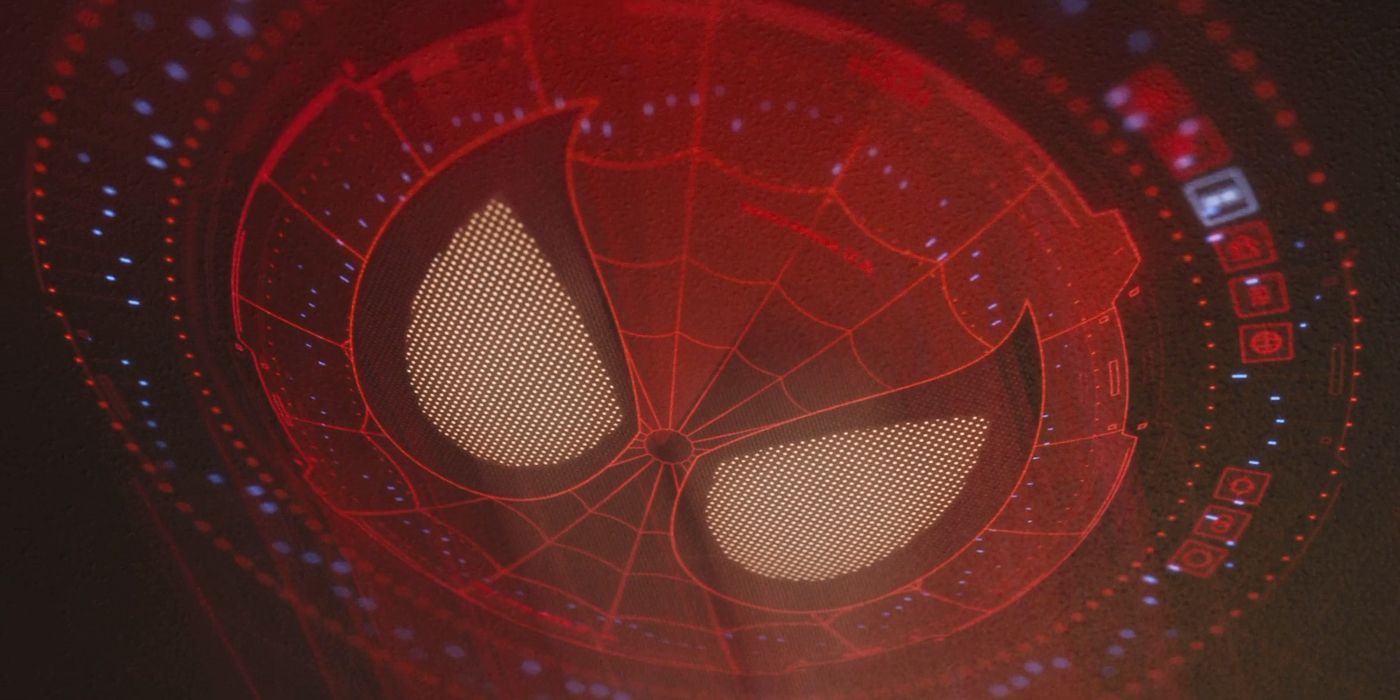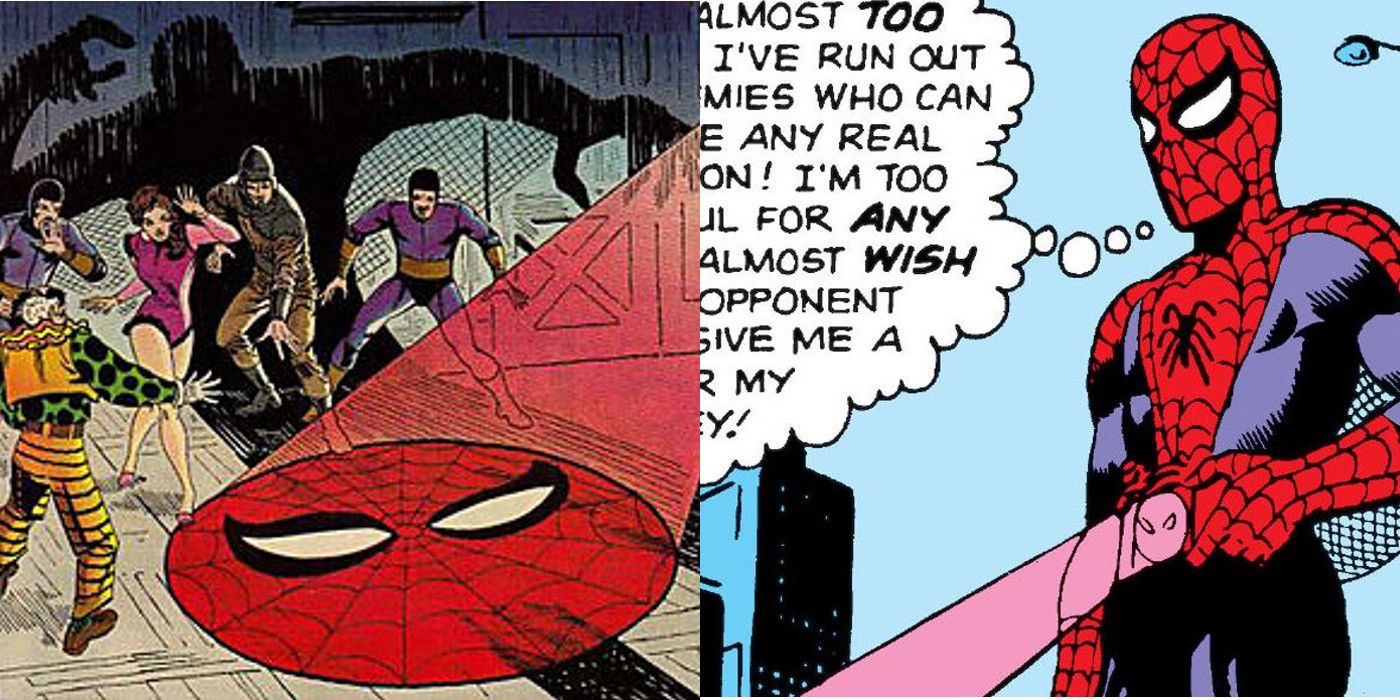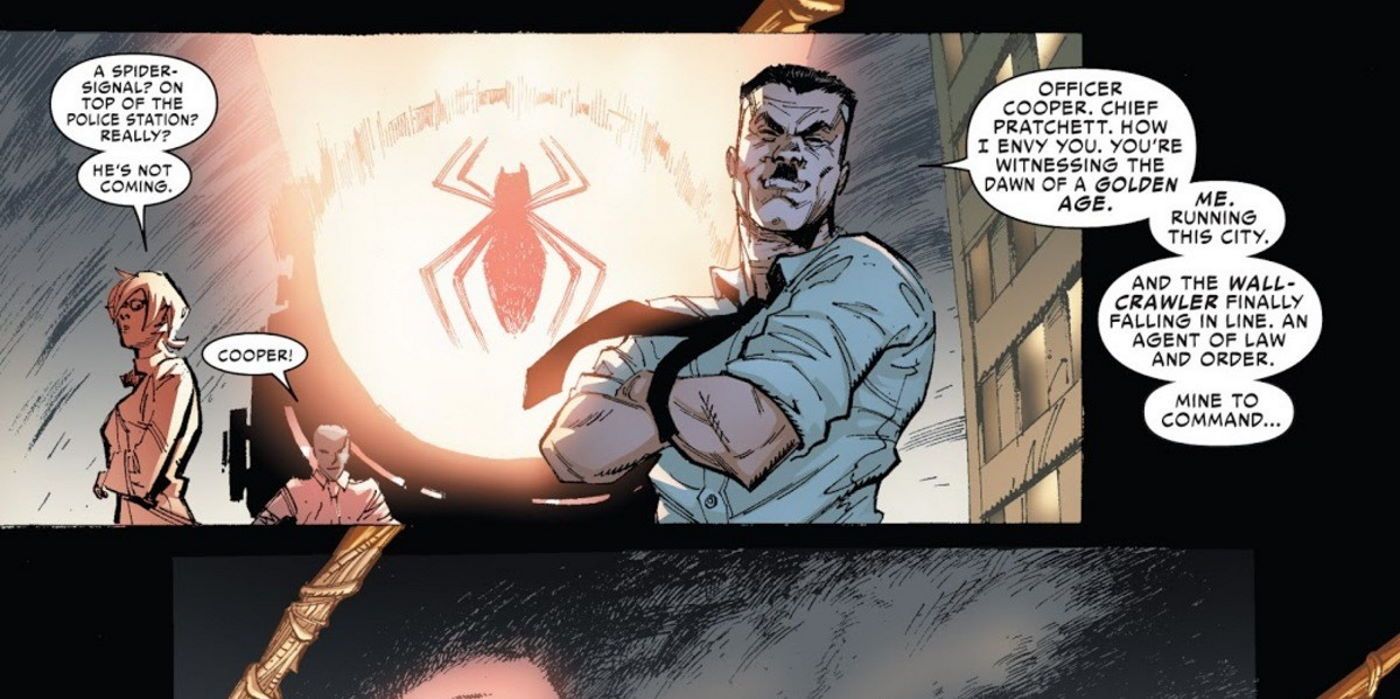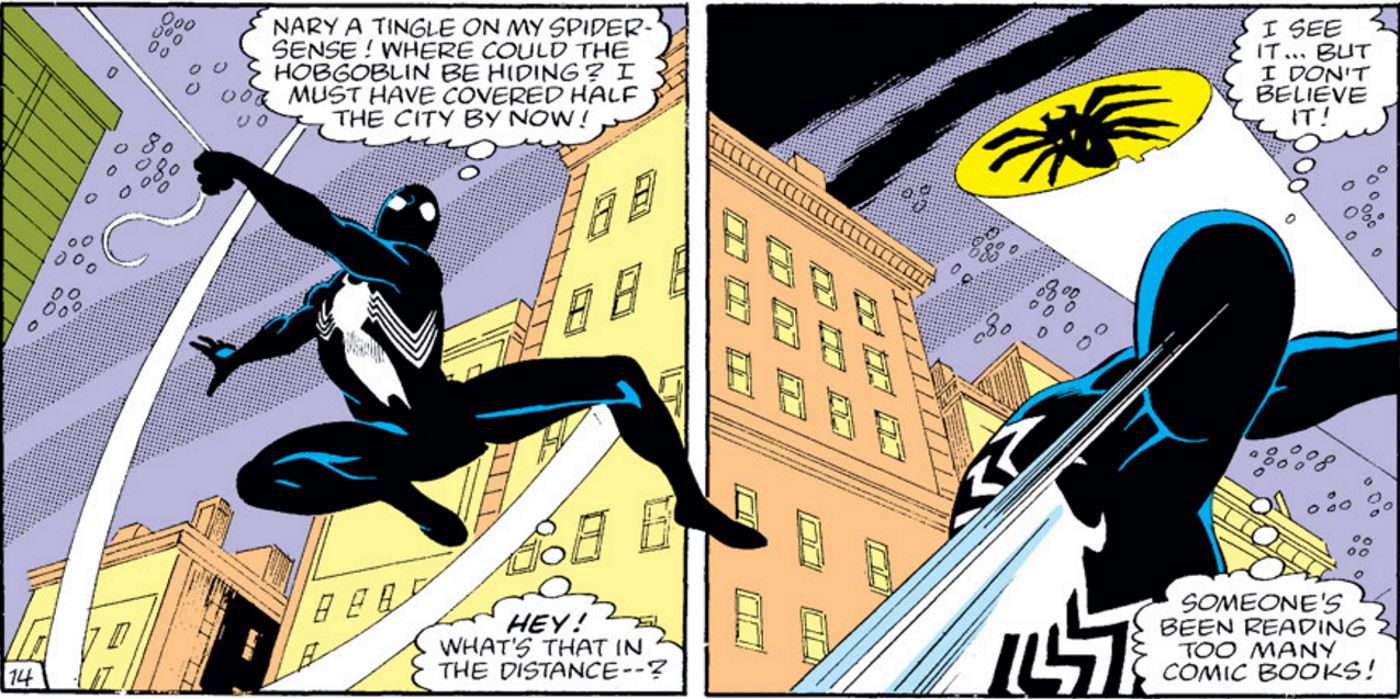Spider-Man has had a tense relationship with the police for years. Although some cops appreciate the way Spidey battles super villains and helps take down street crime, many others feel the wall crawler is a huge menace. At one point, however, the police actually tried to contact Spider-Man the same way Gotham City has been calling Batman – with a giant Spider-Signal!
Interestingly enough, the Spider-Signal has been part of Spider-Man lore almost since the beginning. When Peter Parker first designed his costume, web shooters, and gadgets, he also chose to create a utility belt with a flashlight built into the belt buckle. For some reason, Peter decided to make this flashlight project a giant, red image of his Spider-Mask. Early stories actually showed Peter shining the light onto some criminals he’d just caught just to let the police know who was responsible (as if the giant web net he left them in wasn’t a big giveaway).
In Peter Parker: Spider-Man #26, however, a District Attorney recalled a time when New York’s mayor ordered her department to bring Spider-Man to justice at any cost. Unable to figure out how to contact Spider-Man, one of the junior attorneys came up with the idea to build a giant Spider-Signal – at great expense to the New York taxpayers – and project it onto a building in hopes that Spider-Man would see the signal and swing in dramatically, letting the police take him down.
Unlike Batman, however, Spider-Man stayed as far away from the signal as he could – leaving thirty-four detectives and police marksmen to freeze on the coldest night in the year, in a pouring rainstorm, until four in the morning. Spidey did appear in front of the district attorney a few nights later just to inform her he wasn’t stupid enough to fall for such an obvious ploy. While the district attorney offered to help Spider-Man work with the police, Spidey – knowing not all the police could be trusted – turned her down. Surprisingly, the district attorney became a fan of Spider-Man’s and subtly began helping him by ignoring the mayor’s demands to catch him.
Later, when Peter’s former boss J. Jonah Jameson became mayor of New York, he also commissioned a redesigned Spider-Signal on the police station to call Spider-Man. At the time, Doctor Octopus had taken control of Spider-Man’s body and he actually went to the police station – to destroy the Spider-Signal since he reasoned it would just let his enemies know where to find him.
Actually, given how expensive both of those Spider-Signals must have been, maybe the police should have taken a tip from a Spider-Man fan who actually managed to attract the wall crawler on a much smaller budget. In The Amazing Spider-Man #263, Spidey fan boy Ollie Osnick creates his own mechanical spider-legs from a design originally inspired by Doctor Octopus. Wanting to be Spider-Man’s sidekick, Ollie modifies a flashlight to illuminate a bright spider symbol in the sky.
Spidey catches a glimpse of it and, although he grumbles that “someone’s been reading too many comic books,” follows the signal to meet Ollie on a rooftop. While Spider-Man ultimately turns Ollie down, the fact that Ollie’s homemade Spider-Signal was able to successful reach Spider-Man when the police couldn’t accomplish this with two giant searchlights says a lot about his ingenuity. Despite the similarities between their signals, Spider-Man is clearly nothing like Batman when it comes to his relationship with the police.




